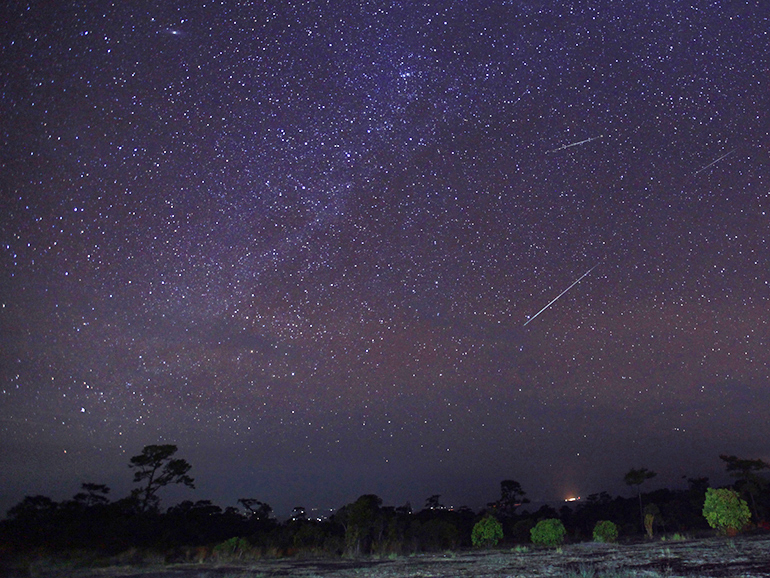Skywatchers in Saskatchewan have a rare celestial treat ahead as the 2025 Orionid meteor shower reaches its peak later this month. With moonless skies and clear autumn air, stargazers are in for one of the brightest displays in recent memory.
The Orionids occur annually when Earth passes through debris left by Halley’s Comet, which last appeared in 1986. NASA describes Orionid meteors as bright and fast, often leaving glowing trails that linger for seconds to minutes. This year, the timing aligns with the moon entering a new phase on Oct. 21, leaving the meteors unimpeded by lunar light.
Meteor activity runs from Oct. 2 to Nov. 12, with peak viewing expected Oct. 20–21. Observers can expect 20 to 30 meteors per hour in ideal dark-sky conditions. In Saskatchewan, the best viewing will be in rural or remote areas away from city lights, looking toward the southeastern horizon. Experts recommend giving eyes at least 30 minutes to adjust to the dark and scanning about 40 degrees above the Orion constellation, the shower’s point of origin.
In addition to the meteor display, stargazers may catch a glimpse of Comet C/2025 A6 (Lemmon), a green-hued comet making its closest approach to Earth between Oct. 20–21. Experts note that the comet will not return until the year 3421, offering Saskatchewan residents a once-in-a-lifetime opportunity for a dual celestial show.
Skywatchers are encouraged to dress warmly and bring a blanket or chair to enjoy the early-morning spectacle. Clear, open areas in the province’s northern and central regions offer prime viewing conditions for what promises to be one of the year’s most memorable astronomical events.
For more information on optimal viewing locations and safety tips for stargazing, visit local astronomy clubs or Saskatchewan Parks dark-sky sites.

